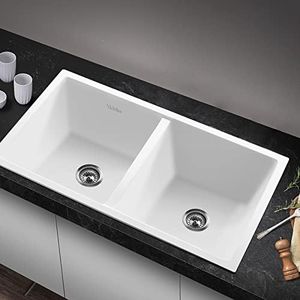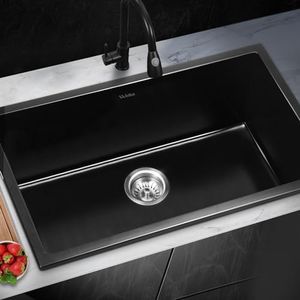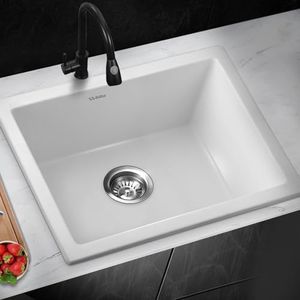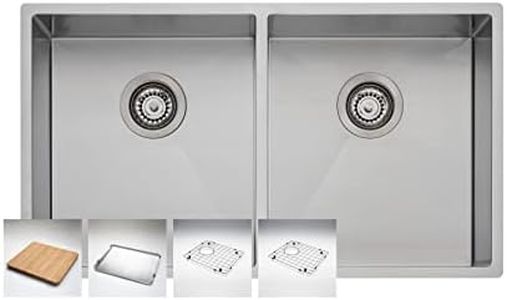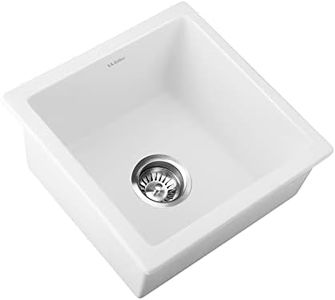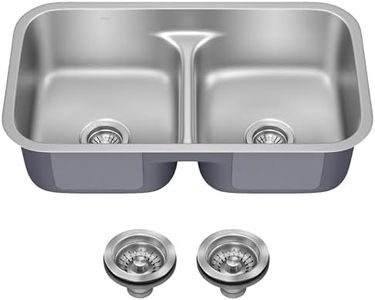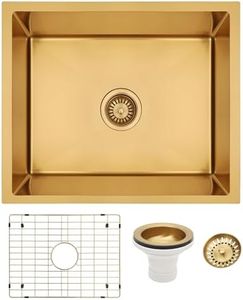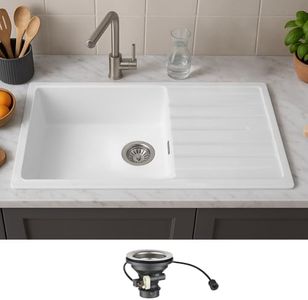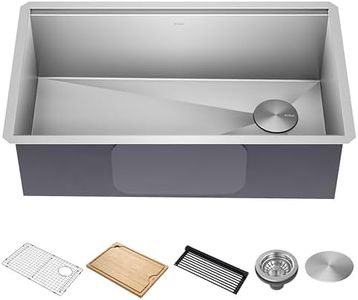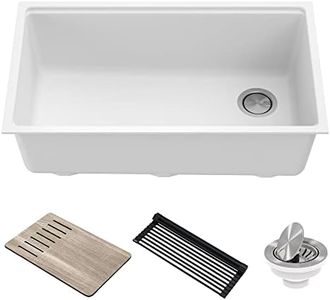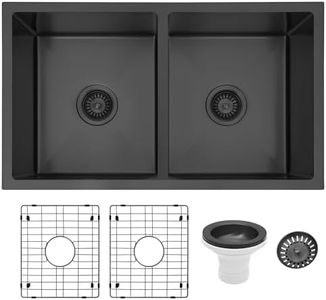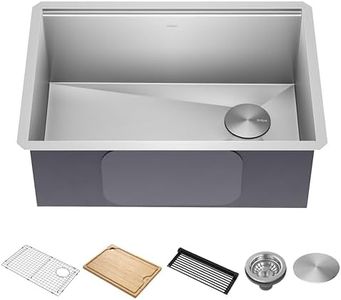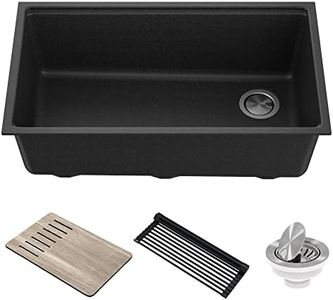We Use CookiesWe use cookies to enhance the security, performance,
functionality and for analytical and promotional activities. By continuing to browse this site you
are agreeing to our privacy policy
10 Best Kitchen Sinks
From leading brands and best sellers available on the web.Buying Guide for the Best Kitchen Sinks
Picking the right kitchen sink is important because it's a central fixture in your kitchen used daily for cooking, cleaning, and sometimes even food preparation. Before making a choice, consider how you use your kitchen, the space available, and your cleaning preferences. Different sinks offer various shapes, sizes, and materials, each affecting usability and appearance.MaterialThe material of a kitchen sink impacts how it looks, feels, and lasts over time. Common materials include stainless steel, porcelain, granite composite, and cast iron. Stainless steel is tough, easy to clean, and generally fits modern kitchens, but it can scratch or show water spots. Porcelain and cast iron are classic, offering a smooth look, but are prone to chipping or fading. Granite composites resist scratching and stains and offer a modern look, but are heavier. When deciding, think about how much you value durability, the sink’s appearance with your kitchen style, and how much regular maintenance you’re willing to do.
Bowl ConfigurationThis refers to how many compartments or 'bowls' the sink has, most often single, double, or occasionally triple. Single bowl sinks work well for washing large pots and pans, making them good for people who cook a lot or wash items by hand. Double bowl sinks can make multitasking easier, such as washing in one side and rinsing in the other, helpful for busy kitchens or those who like to separate duties. Triple bowls are less common and take up more space, generally suited for large kitchens with heavy usage. Think about your washing habits and space to decide which configuration matches your routine.
Mounting StyleMounting style is how the sink fits into your kitchen counter. The main types are top-mount (drop-in), under-mount, and farmhouse (apron-front). Top-mount sinks are set into a hole in the countertop, easy to install, and work with most counter types. Under-mount sinks are attached from below, creating a smooth surface ideal for wiping crumbs directly into the sink, but usually require solid counters like granite. Farmhouse sinks offer a deep basin and a distinctive front panel, serving as both a style and functional statement. Your kitchen style, counter type, and preference for cleaning ease should guide which style you prefer.
Size and DepthSink size and depth determine what you can fit in your sink and how comfortable it is to use. Small sinks work for compact kitchens where space is limited, but may not handle large pots well. Standard sinks often range from 8 to 10 inches deep, balancing accessibility and capacity. Deeper sinks (more than 10 inches) are great if you need to wash large items often, but may be harder to use for children or shorter users. Measure your available cabinet and counter space, consider what you usually wash by hand, and pick a size and depth that match your kitchen habits.
Drain PlacementDrain placement refers to where the sink’s drain hole is located—center, rear, or off to one side. Center drains are traditional and usually straightforward for plumbing. Rear and side drains open up space under the sink (helpful for storing cleaning items) and let you work without standing directly over the drain. Your kitchen layout, storage needs, and desire for a neater countertop can all influence what kind of drain placement will work best for you.
Accessory CompatibilityAccessory compatibility means how easily you can add extras like cutting boards, colanders, drying racks, or soap dispensers. Some sinks are designed with built-in ledges or custom-fitted accessories, making food prep and cleanup smoother. If you love multi-tasking or want to save counter space, look for sinks with compatible features. Consider your cooking and cleaning routine—if you love efficient workspaces or use lots of gadgets, accessory compatibility may be key.
